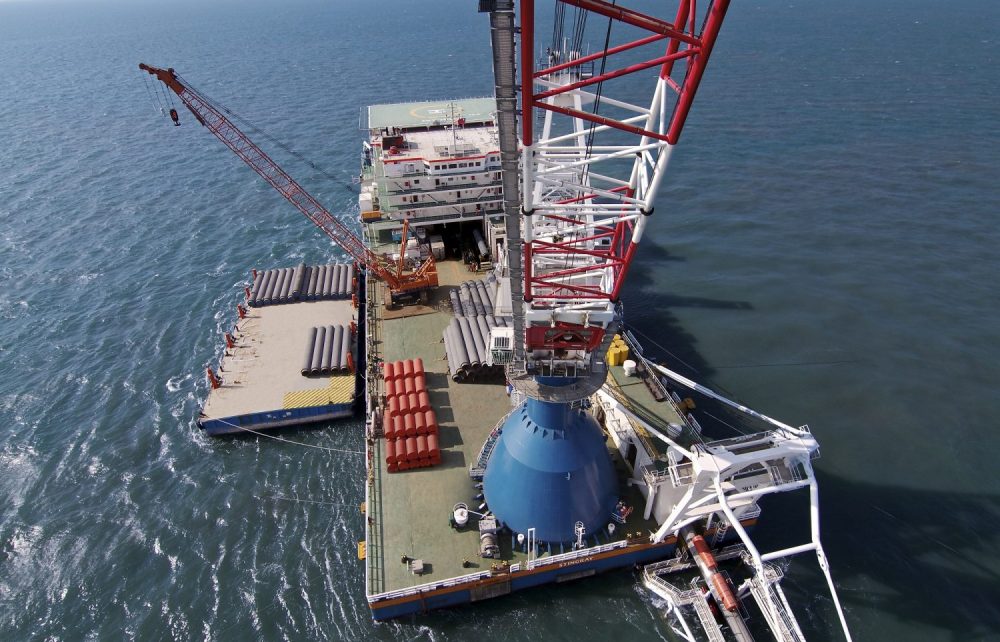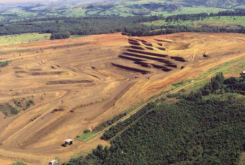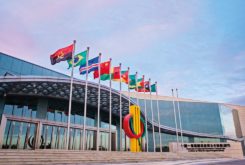After many delays, 2019 has become the year when, finally, both liquified natural gas (LNG) projects in Cabo Delgado, in northern Mozambique, are underway. But a few challenges still remain before they become a reality and, in 5–6 years, Mozambique becomes Africa’s biggest LNG producer, exporting energy to China and other Asian countries.
Mozambican President Filipe Nyusi travelled to Palma, Cabo Delgado province, on 6 August to symbolically lay the foundation stone of Rovuma Basin Offshore Area 1, the LNG project led by US multinational Anadarko, which made its final investment decision (FID) in mid-June.
Prior to the FID, Anadarko secured extended Sales and Purchase Agreements with several customers such as Tokyo Gas and Centrica LNG (2.6 mtpa, or metric tonnes per annum), Shell (2 mtpa) , CNOOC Gas and Power Singapore Trading & Marketing Pte Ltd (1.5 mtpa), EDF (1.2 mtpa) and Bharat Petroleum Corp Ltd (1 mtpa), among others.
The project is located in the area where Anadarko and its partners discovered approximately 75 trillion cubic feet (Tcf) of recoverable natural gas in Offshore Area 1, in the Rovuma Basin.
The investment will be led by Anadarko and Mitsui, the two operators with the largest shareholdings in the consortium (26.5% and 20% respectively). Anadarko was recently acquired by Occidental Petroleum Corporation (OXY), which struck an agreement to sell Anadarko’s Africa assets to Total for US$10 billion.
Mitsui E&P Mozambique Area 1 Limited (MEPMOZ), a subsidiary of Mitsui & Co and Japan Oil, Gas and Metals National Corporation (JOGMEC), has provided technology for the extraction of natural gas of the Golfinho and Atum fields of Area 1. Japan will also be an important final market for Rovuma gas.
The Area 1 joint venture also includes Mozambican state-owned ENH Rovuma Área Um, SA (15%), India’s ONGC Videsh Ltd (10%), Beas Rovuma Energy Mozambique Limited (10%), BPRL Ventures Mozambique BV (10%) and Thailand’s PTTEP Mozambique Area 1 Limited (8.5%), the parent company of which recently acquired Portugal’s Partex for US$622 million.
A total investment of around US$23 billion is expected, making the Area 1 LNG project by far the largest investment in Mozambican history.
Area 1 Mozambique LNG will also be responsible for the construction of facilities and support services that will serve the Area 4 Coral Sul FLNG consortium – Mozambique Rovuma Venture (70%, the company in turn held by Eni, ExxonMobil and CNPC), Galp Energia (10%), Kogas (10%) and ENH (10%) – which will include storage and the maritime terminal, as well as the resettlement of local inhabitants in a new village, currently under construction.
These two projects, along with Mamba (also in Area 4, approved in May 2018), will have an estimated total investment of over US$50 billion and production in excess of 30 million tonnes per year.
Due to the excess supply of LNG in the market, the FID of the Rovuma LNG projects had been successively postponed. A record number of LNG projects have been announced in the last few years. In order to secure financing, consortia need sales agreements at favourable prices.
According to sources connected to the projects, a few substantial challenges still remain, including the financing of Mozambican state-owned ENH for the project, at a time Mozambique is in a default situation on its official debt, and ENH’s financial situation is precarious. The company’s balances are negative and it is not in a position to provide satisfactory guarantees to commercial banks.
While a US$2.25-billion financing contract is due to be completed in September to fund the company’s participation in Area 1 (15%), for the investment corresponding to its 10 per cent holding in Area 4, ENH should not resort to sovereign-guaranteed commercial banking but rather to an agreement with the remaining partners – Eni, ExxonMobil, CNPC, Galp and Kogas. The “mortgaging” of ENH’s revenues to the Area 1 consortium by the company that will manage the gas sale is predictable and will be released gradually. None of the partners, according to sources in the sector, will risk the state participating in the project without strict guarantees.
According to sources in the sector, the possibility of “carry” financing of ENH by the partners in the two consortia, would allow the country financing in more favourable conditions. In this scenario, the mortgaging of ENH’s revenues in the gas trading processes is a precondition, serving as a warranty. ENH’s revenues would thus be captivated for a period of up to 10 years.
The FID for Area 4 is expected later this year.
It is estimated that in 2025, the Area 1 project could generate revenues for the Mozambican state in the order of US$2.1 billion. Overall revenues over the life of the project are expected to reach US$61 billion. It is also planned to create 5,000 direct jobs in Cabo Delgado and around 45,000 indirect jobs.
The Mozambican state will benefit from 10 streams of tax revenue: Corporate Income Tax (IRPC), Individual Income Tax, Surface Tax, Dividends, Valuation, Environmental License, Oil Production Tax (“royalties”), Tax on Petroleum Production in Kind, Contribution to the Fund for Social Projects, and Institutional Contribution. The government, in the contract signed with Anadarko Mozambique Area 1, granted an exemption of 25 per cent in the IRPC in the first eight years, starting from the first year of commercial production.
Another challenge for the next few years is the unforeseen and worsening security in the Cabo Delgado region, where attacks by armed militias have multiplied in the last two years. These could substantially increase costs for the LNG projects, namely in hiring security firms. In February, workers from Portuguese contractor Gabriel Couto were attacked by the armed militias near the Afungi LNG Park construction site.
The park, located on the Afungi Peninsula and serving the nearby offshore Areas 1 and 4, has also raised concerns about the government’s foreseeable inability to process and dispatch visa applications for expatriates to serve there. The number of foreigners could reach as high as 7,000, all of them necessarily in possession of a work visa. The slowness of the consular process in Mozambique may have effects on delays in the development of the various contracts.




